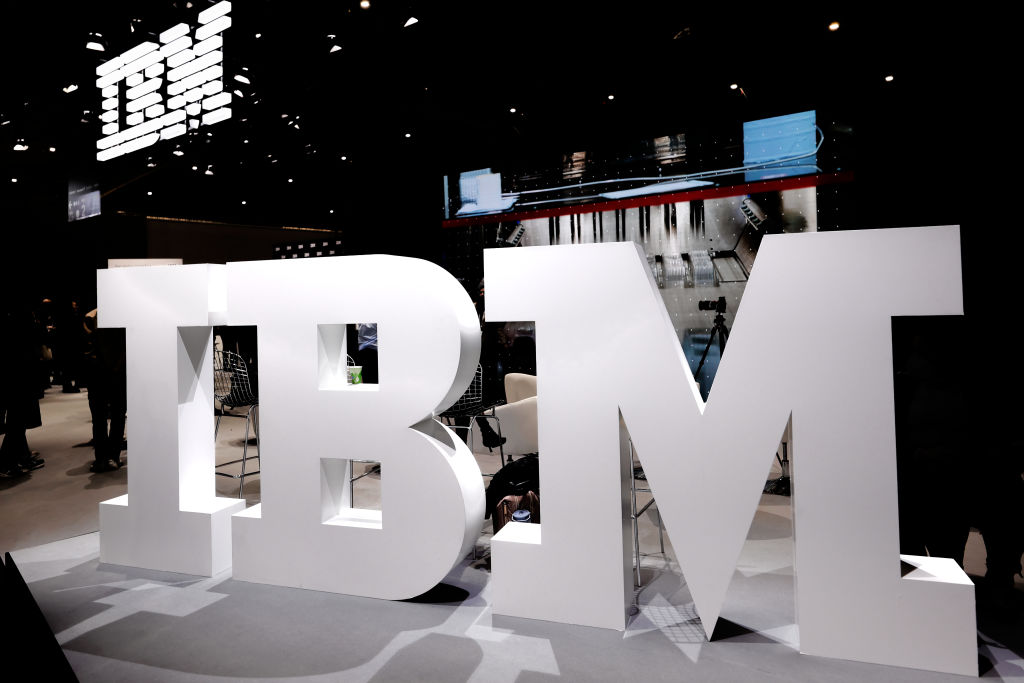Is This the New Bear Market?
The warning signs are all there, and so are the headwinds


The current bull market, now almost 10 years old, is the longest on record. And it has attained that rich status by rebounding from numerous plunges.
We’ve become so accustomed to its high-wire act that every selloff triggers a reflexive “buy-the-dip” reaction among enough traders to make a recovery reality.
But this time, I fear, the bull may finally be on its last legs – and it could be time for the matador to administer the coup de grace. Even if we do get a snap-back rally from this plunge, it may well be short-lived, eventually succumbing to a bear market, which is a drop of 20% or more.
From just $107.88 $24.99 for Kiplinger Personal Finance
Become a smarter, better informed investor. Subscribe from just $107.88 $24.99, plus get up to 4 Special Issues

Sign up for Kiplinger’s Free Newsletters
Profit and prosper with the best of expert advice on investing, taxes, retirement, personal finance and more - straight to your e-mail.
Profit and prosper with the best of expert advice - straight to your e-mail.
What’s different this time? And more important: What should you, the investor, do?
This Selloff vs. The Rest
The tariff disputes with China – exacerbated by the Dec. 1 arrest of a Chinese technology executive – are terrible for global growth and stock markets. But they’re hardly the only problem the aging bull faces.
Perhaps most worrisome is the activity of the stock market itself. In a healthy stock market, a broad range of stocks and stock sectors advance and a paltry few decline. In all this bull market’s previous selloffs, breadth has remained relatively healthy. For almost the entire bull run, advancers have far outpaced decliners, and many more stocks have made new 52-week highs than have fallen to new yearly lows.
Not so, in the current selloff.
Jim Stack, president of InvesTech Research, says that the number of daily advancers has become puny compared to those losing ground. Even worse is the number of stocks making new lows – something Stack has fashioned into what he calls his Negative Leadership Composite. When the percentage of new 52-week lows to yearly highs is as high as it is today, the market has fallen into a bear market 88% of the time, Stack says.
Stack recently cut back his recommended allocation to stocks to 55% – the lowest level since the tail end of the last bear market in 2009. He’s not quite ready to label the selloff a bear market because he’s waiting for the economy’s leading indicators to weaken and “confirm” a bear market. But he sees more losses ahead for stocks.
Stack, who’s based in Whitefish, Montana, has become my favorite market strategist because he’s been right so often. He called the bottom of the 2007-09 bear market almost to the day, and he’s stayed bullish through most of the rockiest times in the current bull market.
But he’s hardly the only market strategist who sees trouble ahead. Doug Ramsey, chief investment officer of The Leuthold Group, a research firm based in Minneapolis, has cut stock allocation to 36%. He expects an average cyclical bear market, which implies a loss of 25% to 30% in the major stock indices.
Why This Time Might Lead to a Bear Market
Here are some reasons I think this selloff may be the real thing:
Global growth is slowing. Whether you look at China or Japan, Brazil or Venezuela, Germany or Great Britain, economic growth is slowing. The plunging price of oil may be good news for consumers, but it’s awful news for oil exporters such as Saudi Arabia, and it has often been a harbinger of recession.
The Federal Reserve has drawn blood. The Fed has been tightening, every so gradually, a quarter-point here and a quarter-point there. But after three years of tightening, the benchmark 10-year Treasury Bond yields a not-so-shabby 2.87%. That’s increases borrowing costs for both consumers and businesses, and it’s high enough to make bonds a real competitor to stocks for investors.
The yield curve. Short-term Treasuries have already briefly yielded more than longer-term Treasuries. That’s called an “inverted yield curve.” The curve to watch is where the two-year yields more than the 10-year – it hasn’t inverted yet, but it’s getting close. This curve inversion has preceded every recession since 1975. Why? Because that kind of yield curve means investors anticipate a weakening economy. And recessions and bear markets go together like peanut butter and jelly.
Profit margins are shrinking. Even as public companies report record earnings, analysts and corporate chieftains fret over the future. As costs, especially for borrowing, increase, either prices have to rise or profits have to contract. So far, most companies are choosing to keep prices low and let the damage drop to their bottom lines.
But tariffs are causing real pain. Ford (F) and General Motors (GM), for instance, have already cited tariffs as a massive headwind for profits, and numerous other stocks are feeling the pinch.
Nothing about higher tariffs is good for the global economy. Common sense says it must lead to higher prices. If you can’t buy a widget at the best price you can find on the world market, you’re likely to pay more for the widget and, if you can, pass the price increase on to your customers.
Tariffs also damage global supply chains. Many of today’s high-tech products, for instance, have one step in the process performed in one country, a second done in a second country, and a third done elsewhere still. Rejiggering these supply chains to cope with onerous tariffs costs time and money. GoPro (GPRO) is experiencing that, and it just announced it will move some of its camera production out of China to avoid tariffs.
On the plus side, the U.S. economy remains robust. Unemployment is near all-time lows. Virtually anyone who wants a job can find one. The Conference Board’s index of leading economic indicators points to further growth ahead. And you almost never get a bear market – generally defined as drop of 20% or more in the major stock averages – without a recession.
Trouble is, the economy often appears incredibly strong just as it’s about to run off the rails. So it was in 1999, when everyone seemed to be quitting their job to become a day trader or launch an Internet startup. Ditto for 2006, when flipping houses was all the rage.
The fact is the U.S. economy can fall off the rails very quickly, and the stock market often sells off before signs of recession are even evident.
What Should You Do?
That depends. If you’re truly a committed buy-and-hold investor, plan for things to get quite rocky. Sell some of your most volatile stocks and stock funds, and consider lower-risk fare, such as consumer staples, health care and utilities.
Better yet, trim, say, 10% or 15% of your stock holdings. Why so little? Because I could be wrong. Historically, the stock market has risen about two-thirds of the time and has averaged an annual return of roughly 10%. I’ve seen too many people who bailed completely out of stocks in 2008 and still are waiting for the right time to get back into stocks. Meantime, they’ve missed the longest bull market of our lifetimes.
So, yes, I’d trim some stocks – but don’t try to be too smart. Big allocation shifts seldom pay off.
Steve Goldberg is an investment adviser in the Washington, D.C., area.
Profit and prosper with the best of Kiplinger's advice on investing, taxes, retirement, personal finance and much more. Delivered daily. Enter your email in the box and click Sign Me Up.

-
 How to Avoid Feeling Too Guilty to Spend in Retirement
How to Avoid Feeling Too Guilty to Spend in RetirementAre you living below your means in retirement because you fear not having enough to leave to your kids? Here's how to get over that.
-
 Strategies for Women to Maximize Social Security Benefits
Strategies for Women to Maximize Social Security BenefitsWomen often are paid less than men and live longer, so it's critical that they know their Social Security options to ensure they claim what they're entitled to.
-
 Dow, S&P 500 Rise to New Closing Highs: Stock Market Today
Dow, S&P 500 Rise to New Closing Highs: Stock Market TodayWill President Donald Trump match his Monroe Doctrine gambit with a new Marshall Plan for Venezuela?
-
 Dow Adds 472 Points After September CPI: Stock Market Today
Dow Adds 472 Points After September CPI: Stock Market TodayIBM and Advanced Micro Devices created tailwinds for the main indexes after scoring a major quantum-computing win.
-
 What the Rich Know About Investing That You Don't
What the Rich Know About Investing That You Don'tPeople like Warren Buffett become people like Warren Buffett by following basic rules and being disciplined. Here's how to accumulate real wealth.
-
 How to Invest for Rising Data Integrity Risk
How to Invest for Rising Data Integrity RiskAmid a broad assault on venerable institutions, President Trump has targeted agencies responsible for data critical to markets. How should investors respond?
-
 What Tariffs Mean for Your Sector Exposure
What Tariffs Mean for Your Sector ExposureNew, higher and changing tariffs will ripple through the economy and into share prices for many quarters to come.
-
 How to Invest for Fall Rate Cuts by the Fed
How to Invest for Fall Rate Cuts by the FedThe probability the Fed cuts interest rates by 25 basis points in October is now greater than 90%.
-
 Are Buffett and Berkshire About to Bail on Kraft Heinz Stock?
Are Buffett and Berkshire About to Bail on Kraft Heinz Stock?Warren Buffett and Berkshire Hathaway own a lot of Kraft Heinz stock, so what happens when they decide to sell KHC?
-
 Dow Jones Industrial Average Nears New Highs: Stock Market Today
Dow Jones Industrial Average Nears New Highs: Stock Market TodayThe successor to the first stock market index is getting up there with the S&P 500 and the Nasdaq Composite in all-time-high territory.
-
 How the Stock Market Performed in the First 6 Months of Trump's Second Term
How the Stock Market Performed in the First 6 Months of Trump's Second TermSix months after President Donald Trump's inauguration, take a look at how the stock market has performed.